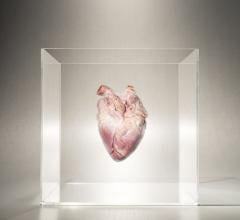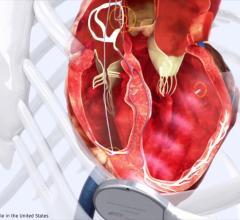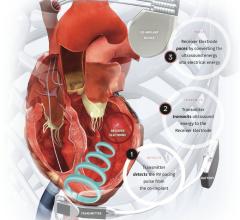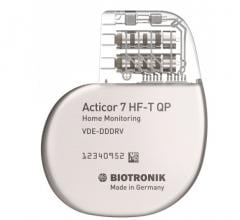
October 1, 2013 — The U.S. Food and Drug Administration (FDA) approved Biotronik’s Ilesto family of implantable cardioverter-defibrillator/cardiac resynchronization therapy defibrillators (ICD/CRT-D devices). Biotronik follows this with the launch of its next generation technology platform Ilesto DX.
The new electromechanical platform allows for a 15 percent size reduction and 29 percent fewer components with no compromise in longevity or clinical features.
“Demand for the DX System has led us to prioritize Ilesto DX as the first device launched as part of the new Ilesto family,” said Paul Woodstock, executive vice president of sales and marketing at Biotronik Inc. “The rapid adoption of the DX System is a clear example of the market shift towards quality outcomes and the right technology for the patient. We have already captured more than 10 percent of de novo implants and with the launch of Ilesto, we expect this number to increase.”
It is the first defibrillator system equipped to provide full atrial diagnostic information with just one specialized defibrillator lead. These capabilities have already been cited in multiple case studies, and physicians are now considering the DX System as a solution to the limited capabilities of single chamber or the additional complications associated with dual chamber devices.
For conventional ICD systems, providing atrial diagnostic capabilities means placing two wires (leads) in the heart, which can increase the likelihood of complications. The second alternative, a typical single-chamber (single-lead) ICD, has no sensing capability in the atrium and is therefore less equipped to detect silent high atrial rates that may cause stroke and inappropriate shocks.
“In the past, I preferred dual-chamber devices because I value the atrial information. With the DX, I no longer have to make that choice,” said Robert Wesley, cardiologist at the University Medical Center of Southern Nevada in Las Vegas. “The DX System represents a solution to the dilemma of whether to choose a dual-chamber or single-chamber defibrillator system, eliminating complications related to the placing of a second lead. This is why the DX System has become a significant part of my ICD mix.”
“The system’s sensing capabilities in combination with Biotronik Home Monitoring allows me to rapidly and continuously monitor how well the device is performing, which offers reassurance to both me and the patient,” said Alexander Mazur, M.D., clinical associate professor at the Carver School of Medicine at University of Iowa. “In a more recent case, a patient was experiencing a fast ventricular rate caused by atrial arrhythmia. We were alerted of the episode through Home Monitoring and the atrial information from the DX System helped to avert inappropriate therapy for the patient.”
For more information: www.biotronik.com


 May 22, 2023
May 22, 2023 








